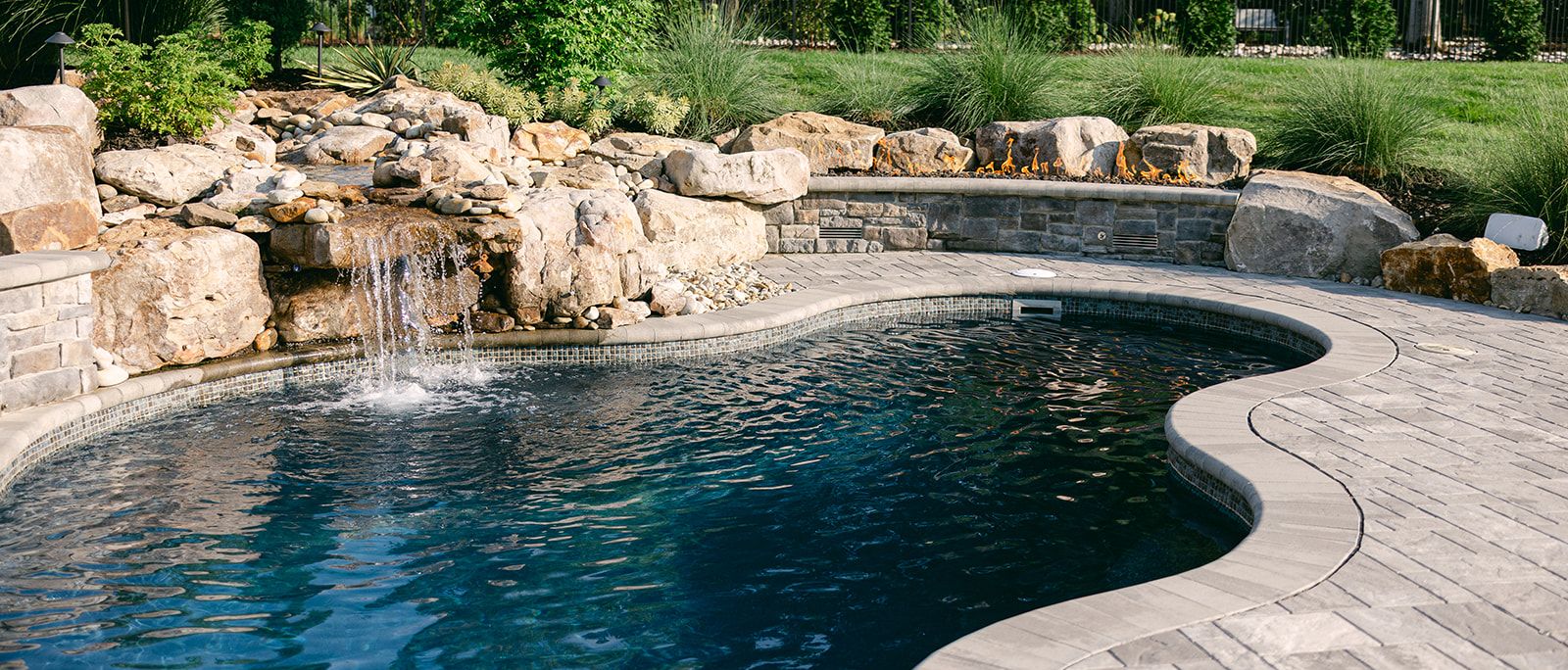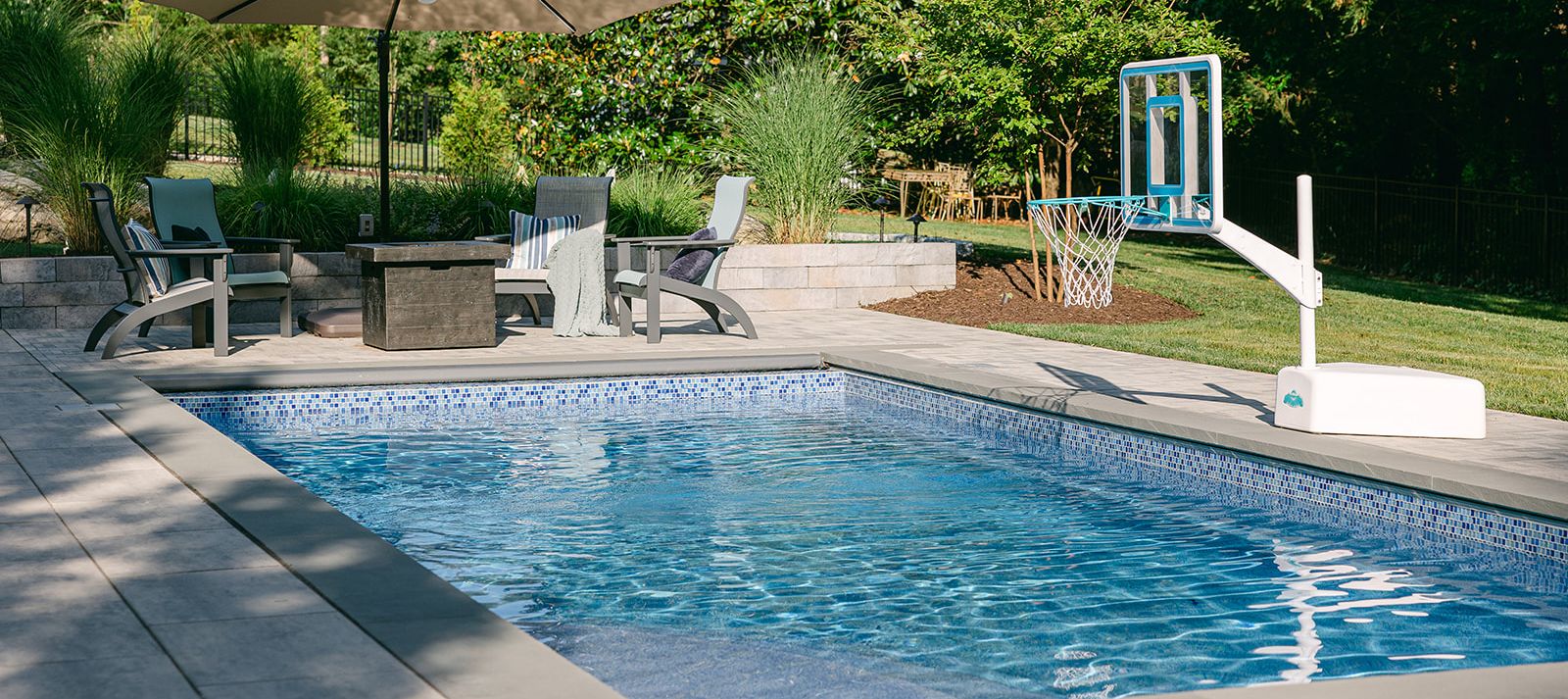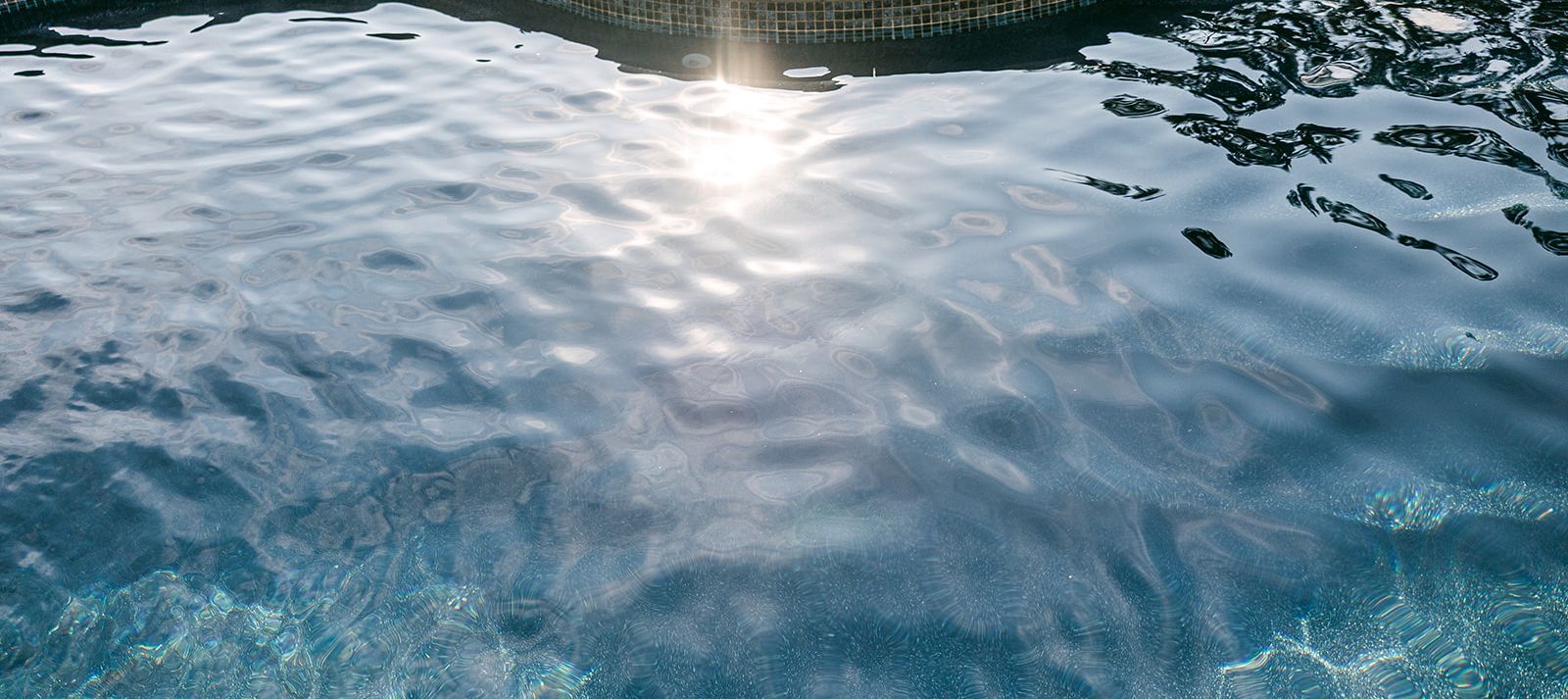Planning
Choosing Between Linear and Free-Form Pools

Which is Right for You?
Story Highlights
When designing a residential swimming pool, one of the first decisions you’ll face is choosing the pool’s shape. While options abound, most pools fall into two main categories: linear and free-form. Each style offers distinct aesthetic and functional advantages, making the choice a matter of personal preference, design style, and intended use. This article explores the key differences between linear and free-form pools to help you make the right choice for your space.
Getting Started
Design Aesthetic and Preferences

Free-Form Pools
Free-form pools are characterized by their flowing, organic shapes and lack of straight lines. They excel in complementing casual, naturalistic, or tropical-themed designs. Here are some highlights:
Best Settings: Free-form pools pair beautifully with lush landscaping, boulders, and naturalistic waterfalls or grottos, evoking the feel of a secluded lagoon or beachside retreat.
Rustic Appeal: These pools are ideal for rustic or naturalistic environments, where their curves enhance the organic feel of the surrounding landscape.
Design Challenges: Trying to incorporate formal or modern elements like straight-edged wall fountains or tanning ledges into a free-form design often looks incongruous.

Linear Pools
Linear pools feature straight lines and geometric shapes, creating a sleek and polished look. They are particularly well-suited for:
Formal or Modern Spaces: Linear pools excel in contemporary and high-end resort-style settings. Their symmetry and clean lines add an element of sophistication.
Functional Add-Ons: Tanning ledges, wall fountains, and automatic pool covers integrate seamlessly into linear designs, enhancing both aesthetics and functionality.
using the space
Usability and Functionality

Linear Pools
Linear pools are often more functional and space-efficient:
Swimming Laps: Their straight lines and consistent width make them ideal for lap swimming.
Water Sports: Activities like volleyball or basketball are easier to organize in a rectangular pool with even depths.
Tanning Ledges: Linear pools accommodate tanning ledges more comfortably, as straight edges allow for ergonomic designs that can hold furniture with ease.

Free-Form Pools
While free-form pools are excellent for general play, they come with certain limitations:
Inefficient Tanning Ledges: Curved tanning ledges must be larger to maintain comfort and accommodate furniture, which can waste valuable pool space.
Limitations for Sports: The irregular shapes and curved edges make laps and water sports challenging, reducing their functionality for these purposes.

Safety feature
Automatic Pool Covers
When it comes to safety and convenience, the shape of your pool significantly impacts the integration of automatic pool covers:
Linear Pools: The tracks for automatic covers can be hidden beneath the coping, maintaining a seamless aesthetic.
Free-Form Pools: Curved designs require tracks to be mounted on top of the decking, which can be unsightly and pose potential safety hazards. Small toes can get caught in the tracks, and leaves or debris often clog the mechanisms. Additionally, the motor and spool system for the cover typically need to be housed on top of the decking as well, requiring some form of enclosure to camouflage the unsightly look. This housing can cut into usable decking space, further reducing the practicality of the surrounding pool area.
$$$$$$
Cost Considerations

Linear Pools
Linear pools are generally less expensive to construct:
Excavation and Framing: Straight edges are easier and faster to excavate and frame, reducing labor costs.
Coping Installation: Straight-edge coping requires fewer custom cuts, making it quicker and less costly to install.

Free-Form Pools
Free-form pools tend to be more expensive due to their complex construction requirements:
Excavation and Rebar: Curves require more precise excavation and time-consuming rebar framing, especially for gunite pools.
Coping Costs: Curved coping necessitates custom cuts around the entire perimeter, significantly increasing labor time and expense.
Curved Additions: Features like curved retaining walls, sitting walls, and outdoor kitchens often add to the overall project cost, as they are more labor-intensive and require custom craftsmanship.
In Closing
Final Thoughts
Choosing between a linear and a free-form pool depends on your personal preferences, intended use, and budget. If you’re drawn to clean lines, modern aesthetics, and high functionality, a linear pool is likely the best fit. However, if your vision includes a more naturalistic, free-flowing design with lush landscaping and rustic features, a free-form pool could bring your backyard oasis to life.
For the perfect pool that meets your aesthetic and functional goals, consult a professional pool designer who can guide you through the decision-making process and help create a space that reflects your style and needs.
Cascading Curves - A Case Study
Cascading Curves - A Case Study
This homeowner approached Outdoor Dreams while relocating from Hawaii into their newly built custom home. With a fresh start in Virginia, they envisioned a poolscape that would feel both welcoming and grounded—a space that blended seamlessly with the architecture of their home while also reflecting the rustic, natural warmth of the Midwest.
Sculpting Fire - Custom Curved Fire Features
Sculpting Fire - Custom Curved Fire Features
When it comes to building a luxury poolscape, a swimming pool is just the beginning. The real magic happens in the details—the elements that transform a backyard into an unforgettable retreat. For the Cascading Curves Project, that magic came in the form of two fully customized, curve-driven fire features that now anchor the space with drama, warmth, and unmistakable personality.